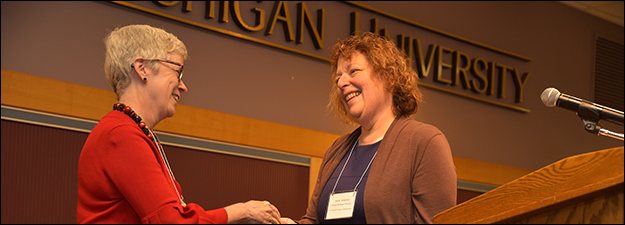The Cultures of Georgia and Armenia
Sponsoring Organization(s)
Rare Book Dept., The Free Library of Philadelphia
Organizer Name
Bert Beynen
Organizer Affiliation
Temple Univ.
Presider Name
Bert Beynen
Paper Title 1
The Year 1000 in the Armenian Imagination
Presenter 1 Name
Sergio La Porta
Presenter 1 Affiliation
California State Univ.-Fresno
Paper Title 4
The Apostle Andrew in Georgia: A Comparative Study of Literary Sources and Archaeological Discoveries
Start Date
12-5-2017 1:30 PM
Session Location
Bernhard 106
Description
Professor La Porta compares Armenian eschatological expectations with Western and Byzantine predictions on the basis of historical, epigraphic and colophonic data. Ms. Petrosyan examines The Book of the Translator, a religious and philosophical lexicon written around 1000 A.D. by Eliya of Nisibis (975-1046) about Syriac terms with Arabic and Armenian explanations, which seems to indicate peaceful interactions between the three populations. Professor Chachanidze gives an overview of the current efforts to locate Georgian manuscripts in Samarkand, some of which may go back to around 1400, when they were taken there by Timur or Tamerlan. Professor Guchua discusses forms of address for e.g. dukes, the queen, Grigoli, monks, noblemen, kuropalates, hereby providing information about the social stratification of Georgian society of those times. Professor Licheli examines data on the Apostle Andrew in Kartlis Tskhovreba (The Life Of Georgia), an Old Georgian chronicle, in the view of recent archaeological discoveries
Bert Beynen
The Cultures of Georgia and Armenia
Bernhard 106
Professor La Porta compares Armenian eschatological expectations with Western and Byzantine predictions on the basis of historical, epigraphic and colophonic data. Ms. Petrosyan examines The Book of the Translator, a religious and philosophical lexicon written around 1000 A.D. by Eliya of Nisibis (975-1046) about Syriac terms with Arabic and Armenian explanations, which seems to indicate peaceful interactions between the three populations. Professor Chachanidze gives an overview of the current efforts to locate Georgian manuscripts in Samarkand, some of which may go back to around 1400, when they were taken there by Timur or Tamerlan. Professor Guchua discusses forms of address for e.g. dukes, the queen, Grigoli, monks, noblemen, kuropalates, hereby providing information about the social stratification of Georgian society of those times. Professor Licheli examines data on the Apostle Andrew in Kartlis Tskhovreba (The Life Of Georgia), an Old Georgian chronicle, in the view of recent archaeological discoveries
Bert Beynen

